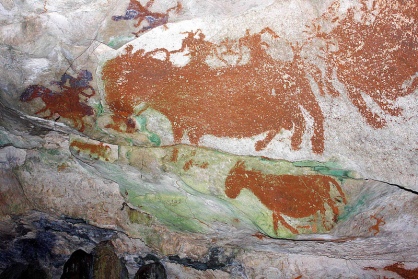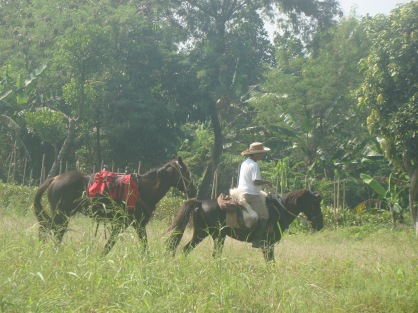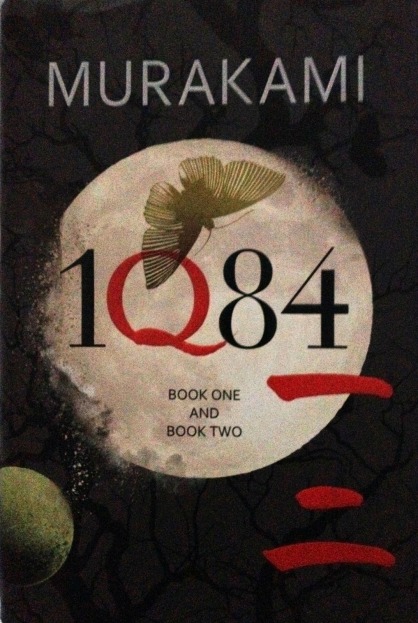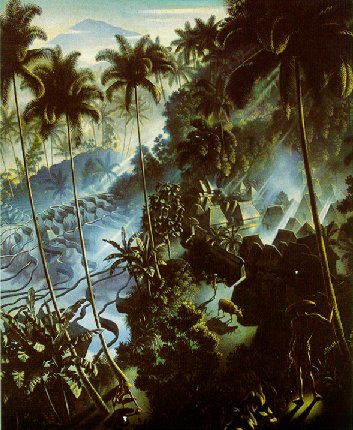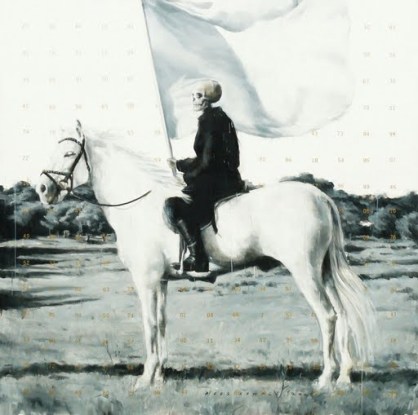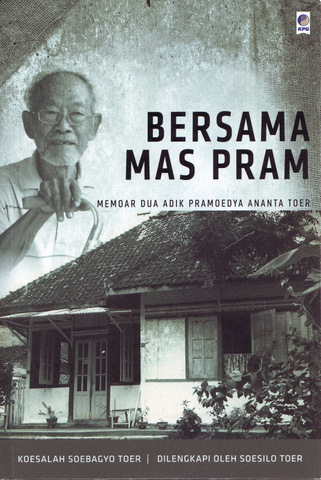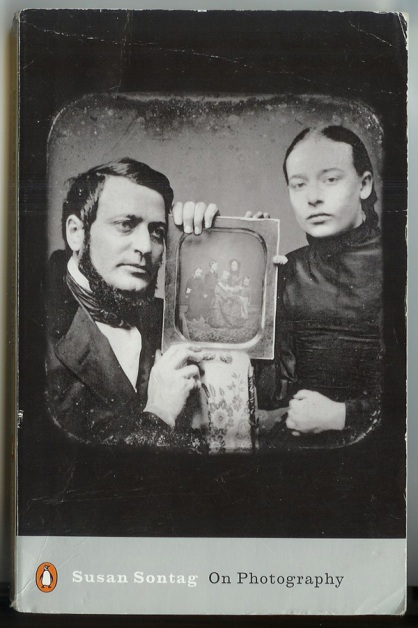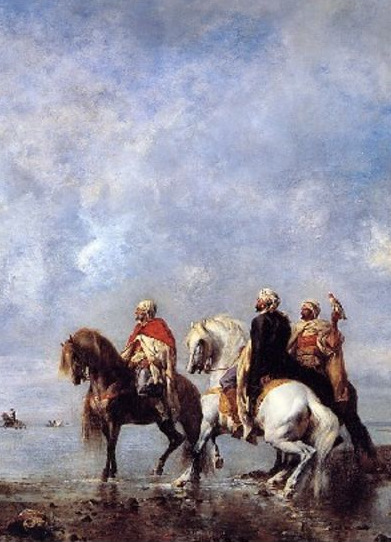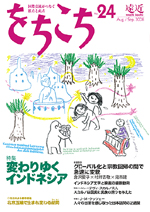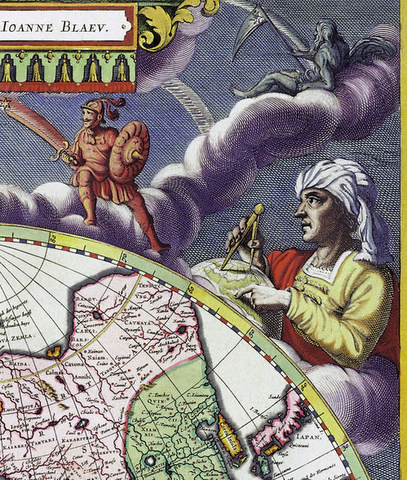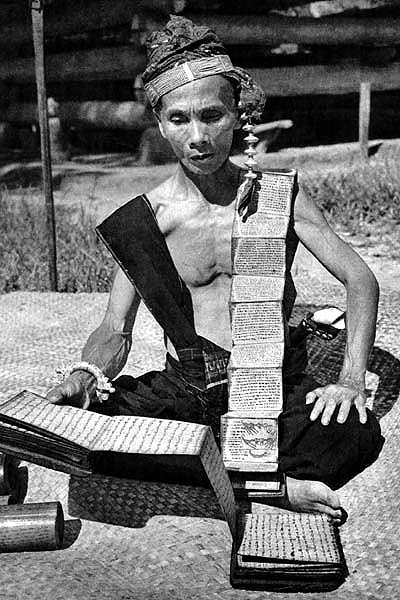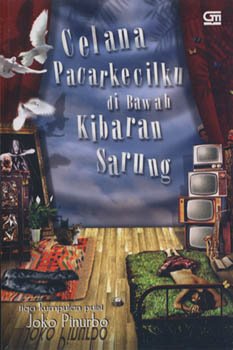Obituari
December 27, 2019
Habibie yang Paripurna
Budaya pop Indonesia, lewat salah satu lirik Iwan Fals, menetapkan ukuran tertinggi kepintaran manusia, yakni “seperti otak Habibie.” Otak Habibie sudah menimbulkan rasa kagum di kalangan rekayasa dan konstuksi Jerman, bahkan sebelum ia mengukir prestasi di dunia penerbangan. Ia misalnya berhasil membuat gerbong kereta yang tingkat kekuatannya dianggap mustahil pada waktu itu, yakni gerbong yang mampu menahan tekanan 200 ton.

Tapi memang, kontribusi teknologis Habibie di ranah aeronautika itulah yang paling dikenal luas. Setengah abad yang silam, dunia penerbangan masih dihantui oleh kekaburan pengetahuan tentang ketangguhan konstruksi pesawat. Penampakan luar sebuah pesawat terbang memang bisa saja halus mulus tanpa cacat. Tapi, seperti buah apel yang terlihat menggiurkan namun mengandung ulat di dagingnya, pesawat yang tampak cantik bisa dikremus perlahan oleh keropos dan retakan yang tersembunyi. Hantu retakan yang tak terdeteksi inilah yang merundung industri pesawat terbang sampai sekitar 50 tahun lalu. Pemakai dan produsen sama-sama tidak tahu persis, sejauh mana bodi pesawat terbang masih andal dioperasikan.
Teater
April 26, 2015
Pengantar
Bertukar Tangkap dengan Lepas
Garasi tampaknya adalah kelompok teater kontemporer Indonesia yang paling kuat memancarkan kesadaran dinamis tentang waktu dan ruang, tentang keniscayaan untuk ikut membentuk watak waktu dan ruang itu dengan berbagai konsekuensinya. Pertunjukan-pertunjukan mereka, dihiasi judul antara lain Waktu Batu#1 (2001), Waktu Batu#2 (2003), Waktu Batu#3 (2004), Repertoar Hujan (2000, 2005), Je.ja.l.an (2008), Tubuh Ketiga (2010), dan Goyang Penasaran (2011). Judul-judul yang merekah begini, tentu bisa ditelusuri akarnya pada kesadaran dinamis atas waktu dan ruang, dengan aneka pengaruhnya pada tubuh dan kesadaran, pada pemahaman tentang diri dan orang lain.
Kesadaran dinamis itu tampaknya merasuk cukup dalam, dan Garasi tak memancarkannya berkelap-kelip hanya di atas panggung, tapi terus membawanya menyemburat, meski mungkin tak menyilaukan, sampai cukup jauh di luar pentas. Kesadaran itu tentu bekerja di balik upaya memungut dan merawat berbagai hal yang mungkin hanyut terseret arus waktu. Meyambut hari lahir mereka yang bermula sebagai suatu lembaga mahasiswa di kampus Fakultas Ilmu Sosial dan Politik, Universitas Gadjah Mada, awak Garasi memilih dan menerbitkan sekumpulan foto kegiatan mereka yang terentang dua dekade. Mereka juga menerbitkan buku yang menghimpun tulisan dari berbagai kalangan, bukan sekedar potongan berita atau ulasan yang pernah muncul di media cetak.
Cave Art
November 28, 2014
Tale of Two Horses
Horse is the most influential animal on the development of history. If there are three things that ushered in the dawn of human civilization, certainly they are: the creation of the alphabet, the discovery of the wheel, and the domestication of the horse. As was emphasized by Alfred Weber, the spreading of horse domestication as a mounted animal, and for hauling carriages, was the catalyst for the blooming of what Karl Jaspers called the Axial Age (die Achsenzeit) from the 8th to the 2nd centuries BC.
Equine Equator
November 28, 2014
Salted Fish and Instant Noodle
The Equine Equator Expedition is undertaken with two horses whose origin can be traced back to the very soil of the equatorial Indonesia. One horse is a KPI (Kuda Pacu Indonesia, or Indonesian Race Horse), a cross-breed between local Sandalwood mares and imported Thoroughbred stallions. The other is a purebred Sandelwood pony whose ancestors came from Sumba Island. These two companions are able to exchange roles as the riding horse and pack animal. By using a modern racing horse and an ‘antique’ local pony, I imagined myself riding an historical vehicle that spatially connecting me to all corners of the earth where the clop of horses hooves can still be heard, an temporally transporting me to the near future of the earth and simultaneously to the late age of prehistoric times when mankind’s ancestors began to lay foundation for their cultures.
Math
October 3, 2014
A Brief Note on Birds
The essence of Mathematics resides in its freedom
— George Cantor
There seems to be a tighter bond between math and poetry than between man and the mind in his head. Well known poets who have long since dead such as John Keats when he wrote Lamia, or Edgar Allan Poe when he worked on Sonnet — To Science, or Walt Whitman when crafting When I heard the learn’d astronomer, do not seem to have recognized this tight bond. The same goes for those who are living and think that math and poetry are two things that have developed at opposite poles, and because of this cancel each other out. A slightly better view, even though it is still shallow, will say that math and poetry, or literature, are not enemies, but these two things are not on the same level, and it is literature that is superior to, that is more amazing than, math. This second view can also be felt in the fat thick novel of the most famous Japanese contemporary writer, Haruki Murakami.
In the first part of his novel IQ84 whose launch was greeted with much fanfare in Europe and America, Murakami wrote the following on mathematics and literature:
Where mathematics was a magnificent imaginary building, the world of story as represented by Dickens was like a deep, magical forest for Tengo. When mathematics stretched infinitely upward toward the heavens, the forest spread out beneath his gaze in silence, its dark, sturdy roots stretching deep into the earth. In the forest there were no maps, no numbered doorways…. Tengo began deliberately to put some distance between himself and the world of mathematics, and instead the forest of story began to exert a stronger pull on his heart… Someday he might be able to decipher the spell. That possibility would gently warm his heart from within.
Matematika
August 13, 2014
Catatan Kecil tentang Burung
The essence of Mathematics resides in its freedom
— George Cantor
Hubungan antara matematika dan puisi agaknya memang lebih erat dibanding hubungan antara manusia dengan benak di tengkoraknya. Para penyair ternama yang sudah wafat seperti John Keats ketika menulis Lamia, atau Edgar Allan Poe saat menggarap Sonnet—To Science, atau Walt Withman ketika mengarang When I heard the learn’d astronomer, tampaknya belum mampu melihat hubungan erat itu. Begitu juga mereka yang masih hidup dan mengira matematika dan puisi sebagai dua hal yang tumbuh di kutub yang bertentangan, dan karena itu saling meniadakan. Pandangan yang sedikit lebih baik, meski tetap dangkal juga, akan mengatakan bahwa matematika dan puisi, atau sastra, memang tak bermusuhan, tapi dua hal itu betapa pun tak setara, dan sastra sungguh lebih unggul, lebih menakjubkan, dari matematika. Pandangan kedua ini terasa juga dalam karya tebal novelis Jepang yang paling menonjol di dunia saat ini, Haruki Murakami.
Di paruh pertama novel IQ84 yang peluncurannya disambut gegap gempita di Eropa dan Amerika itu, Murakami menulis begini tentang matematika dan sastra:
Where mathematics was a magnificent imaginary building, the world of story as represented by Dickens was like a deep, magical forest for Tengo. When mathematics stretched infinitely upward toward the heavens, the forest spread out beneath his gaze in silence, its dark, sturdy roots stretching deep into the earth. In the forest there were no maps, no numbered doorways…. Tengo began deliberately to put some distance between himself and the world of mathematics, and instead the forest of story began to exert a stronger pull on his heart… Someday he might be able to decipher the spell. That possibility would gently warm his heart from within.
Fiksi Tanggung
September 21, 2009
Labirin Berujung Tunggal
Kelak ketika ia sepenuhnya sadar, bahwa nanti akan lahir seorang manusia dari tubuhnya, ia tercekam lagi oleh sebuah rasa longsor yang menggigilkan, yang diperparah oleh penalaran dan dibikin kekal oleh ingatan.
Terakhir kali rasa longsor itu menyeretnya, adalah saat ia melalui puncak dari percintaannya yang sudah berlangsung bertahun-tahun dengan hujan; hujan yang dengan lembut mengunjungi senja dan mengubahnya dari merah lembayung menjadi kelabu, dan akhirnya melulur batas antara langit dan bumi. Gerimis yang gugur bersama angin yang mendengkur, adalah ketulusan langit pada hijau daratan dan biru lautan. Ia ingat rasa sakit itu bermula sebagai rasa cinta diam-diam, dan tumbuh dengan kerinduan langit yang memeluk seluruh bintang; rasa sakit yang konon mencintai mereka yang banyak tidur dan bermimpi.
Seni Rupa
July 30, 2009
Konser Imaji
Dari luar, gedung Museum Nasional Jogja di Gampingan itu tampak sungguh tak istimewa. Selain selembar poster lebar tentang pameran tunggal Agus Suwage (Still Crazy After All These Years: 05 – 31 July 2009) dengan kurator Enin Supriyanto yang membentang di dinding pojok depan, gedung itu seperti tak bergairah untuk menawarkan sesuatu yang layak kenang.Tapi setelah berada sekian menit di dalam, ruang-ruang gedung itu terasa memuai dan saya seakan melangkah perlahan di tempat lain yang kebetulan pernah saya datangi: Tate Modern Gallery dan Mori Art Museum.
Memoar
May 10, 2009
Kisah “Besar” Keluarga Toer
Sebagai karangan yang banyak bertumpu pada ingatan, memoar adalah ragam karya yang bergerak di antara dua kutub: sejarah dan sastra. Jika ingatan itu ditopang sekaligus dijaga ketat oleh catatan kejadian nyata, disusun mengikuti arus waktu yang bergerak kronologis, karangan itu akan menjadi (auto)-biografi penting. Jika ingatan tak harus tunduk sepenuhnya pada catatan ketat peristiwa sejarah, dan narasi disusun tak harus mengikuti alur waktu yang lurus, tak jarang bahkan membiarkan diri terseret oleh arus kesadaran yang berkelak-kelok, karangan itu bisa menjadi novel besar.
Seni Rupa
April 27, 2009
Anemon Baja
Tahun lalu, seusai pembukaan pameran tunggalnya bertajuk NEO Painting di Galeri Koong, Teguh Ostenrik (TO) memberi saya selembar poster berisi foto patung mutakhirnya. Karya yang disusun dari rongsokan logam itu diberinya judul “Give Me a Big Hug” (88 x 153 x 145 cm3). Dengan 11 tentakel baja yang menjulur-julur ke angkasa, patung logam itu, buat saya, cukup kuat menyarankan harapan yang menggapai. Terpacak di tanah dengan landasan yang pejal, dengan bongkahan logam besar yang hatinya bolong seakan meleleh jadi juluran tentakel, karya ini memang bisa terasa seperti kerinduan bumi pada langit. Itu juga bisa berarti kerinduan tanah pada air, kerinduan manusia pada sesama manusia dan juga pada yang bukan manusia.
Photography
March 28, 2009
Susan Sontag, et al.:
Image ─ Time
If fine art were literature, and painting were poetry, then photography were language. Because of, among others, its unprecedented power to immortalize and multiply any image, not only the one that can be spontaneously perceived by human naked eyes, photography is definitely not a mere form of art; it extends beyond art. “Photography is a medium with which art is created.” Susan Sontag elaborated this idea in her book, On Photography (OP, 1976). The assertion that photography—and, of course, cinema—is a language had occurred previously in, for example, Andre Bazin’s work. By focusing her attention mainly on photography and suspending its connection with cinema, Sontag strengthened the assertion and developed it further. In OP, a slim book that stands as one of “the most original and important works on photography,” Sontag even calls photography as a meta-art: a medium to create art and at the same time the highest aspiration of art. In the 19th century Walter Pater dictated that all art constantly aspires towards the condition of music; that is to achieve a match between form and content, to entirely dissolve the distinction between the two. Sontag, in the 20th century, revised Pater’s dictum and emphasized that all art aspires to the condition of photography instead. Along with its capability to live like music that is to make its medium as its very content, photography is also essentially democratic in terms that practically anyone can make it—in the same breath it offers revolutionary energy annihilating the discrimination between ugly art and beautiful one.
Equestrian
December 22, 2008
Ras el Fedowi
Senja itu saya sedang duduk menyusun kembali rasa purba Greek Coffee yang disajikan dalam demitasse mungil buatan Cina. Setahun sebelumnya, di Pulau Corfu, pramusaji ayu yang tersenyum simpul melihat saya bolak balik memesan larutan oker pekat berbuih yang “keras” itu, memberi tahu bahwa kopi ini sesungguhnya adalah Kopi Turki. Asal sebenarnya tentu lebih jauh lagi, di belukar prasejarah jantung Afrika. Kafe di lantai atas Museum Benaki itu dirancang mirip aquarium, memberi sajian tambahan buat pengunjung: pandangan terbuka ke cakrawala dan ke salah satu sudut penting Athena, yang saat itu tengah jadi tuan rumah Pesta Olimpiade Musim Panas 2004. Hampir semua kursi di kafe itu terisi. Saya sedang melamun, menyesap kafein dan kardamom, menyicip kue jahe dan coklat, ketika seorang pengunjung minta izin untuk ikut menikmati sajian pesanannya di meja saya.
Indonesian Women
November 28, 2008
Movie
October 6, 2008
The Word: the Sword and the World
“HERO” Part 2
There are movies which, like other artistic masterworks, never fail to overwhelm us and make us temporarily forget this world in order to rediscover it again and again shining with new rainbow. Every time we spend minutes watching these movies, they spread their forms and contents open and wide, offering a new set of glittering diamonds previously hidden within their overlooked foldings. Zhang Yimou’s Hero (2002) belongs to such cinematic masterworks. Its power will leave us almost speechless and we could only take deep breath—and got suspended—while savoring the succession of scenes presented like a string of bewitching visual art gems. Hero offers a stack of spectacular panoramic layers and dreamlike landscapes taken with wide angel shots, irresistibly seducing the spectator not to dissolve into the nature but to absorb the nature fusing into oneself.
Hero is a work of calligraphy where “profundity depends on perception.” It is also a tranquil transparent lake containing blue heaven whose mirror-like surface could be tapped by different palms and swords and echoing different tunes and messages.
History
September 15, 2008
Karaeng Pattingalloang’s
Heaven and Earth
This narrative essay imagines the encounter of a statesman from Gowa-Tallo Kingdom with the West. He was open-minded and very enthusiastic to Renaissance ideas and scientific mode of inquiry, which came to Gowa-Tallo or Macassar (South Sulawesi, Indonesia) successively following the teaching of Islam, brought by the Sumatran, and Christian by the Portuguese. He lived in one of the most exciting periods in intellectual history: the first half of seventeenth century. The encounter truly gave him deep understanding of how the existing way of life and codes of conduct inherited from the wise native ancestors would not be sufficient and helpful to cope the incoming waves of change, the advancing huge hungry powers from Europe willing to destroy each other and to sacrifice anything for spice and other commodities. This piece is based on the academic works of Anthony Reid (1999), Denys Lombard (1990) and Sagimun MD (1992); its earlier version was published in Inter-Asia Cultural Studies, Volume 3, Number 2, 2002.
That very day, I Mangngadaccinna Daeng I Ba’le’ Sultan Mahmud, more renowned by his title of nobility, Karaeng Pattingalloang (KP)[1] was standing upright. He was embracing the sea breeze and the ruffling waves of Macassar Strait. I imagined that next to the Prime Minister of Gowa Sultanate were standing under the sun of February 1651, his son-in-law: I Mallombassi, later to become Sultan Hasanuddin,[2] and KP’s own son Karaeng Karungrung, later to become the next Prime Minister, deeply digesting a book on his hands. Several of tubarani (warriors) from the Tallo Palace and Fort Sombapou were also present, some were mixing in the crowd of many origins such as Macassar (Gowa)[3], Bugis, Malacca, Java, Campo, Johor, Minang, Pattani, India, China, Portuguese, Spain, Denmark, France and England.
History
September 14, 2008
Engineers of Nation
Some experts call Walter Benjamin’s 1000-plus page magnum opus The Arcades Project (Cambridge: Belknap/Harvard, 1999) quite simply one of the greatest 20th century efforts to comprehend “History”. Some even call this thick tome the greatest endeavour of all studies into one of the most fundamental perceptions in 2500 years of world development: a perception arising from awareness of the way the relationship between limited humanity and unlimited time dictates human life. This perception has become extremely influential in shaping world reality over the past three centuries.
Inspired by various sources, particularly Marcel Proust and Martin Heidegger, Rudolf Mrázek does something similar to Benjamin. Mrázek, an expert on modern Southeast Asian history who was born in the Czech Republic and later moved to America, achieves this in his latest book, currently being translated into Indonesian, Engineers of Happy Land: Technology and Nationalism in a Colony (Princeton: Princeton University Press, 2002).
Literatur
September 14, 2008
Ein kurzer Überblick über
die Literatur Indonesiens
Die Republik Indonesien stellt das größte Archipel der Welt dar und erstreckt sich nördlich und südlich des Äquators zwischen Asien und Australien und zwischen dem Pazifischen und dem Indischen Ozean. Aufgrund seiner Lage zwischen zwei Kontinenten und zwei Ozeanen wird die Republik, die 13 677 Inseln umfasst — etwa 6000 Inseln sind bewohnt — auch als Nusantara (Inselreich in der Mitte) bezeichnet. Ausgedehnt über drei Zeitzonen innerhalb der Koordinaten 97” – 141” Östlicher Länge und 6” Nördlicher Breite und 11” Südlicher Breite, ist das Gebiet Indonesiens fünf mal größer als das der Bundesrepublik Deutschland. Wie in anderen Kulturen der Welt hat sich die Literatur in diesem Land bereits seit schriftloser Zeit entwickelt.
Agama
September 10, 2008
Kelas
Semua agama yang dikenal manusia, memandang dunia sebagai ujian, gelanggang tempat manusia ditempa menjadi makhluk yang lebih mulia. Dunia adalah sejenis kelas di mana manusia dididik untuk mengembangkan kapasitas-kapasitasnya.
Dalam sejarah, setidaknya ada dua kutub besar pandangan tentang dunia sebagai gelanggang. Kutub pertama adalah mereka yang melihat dunia sebagai kelas taman kanak-kanak. Mereka ini memang menganggap bahwa manusia pada dasarnya adalah bocah culun yang mungkin saja semurni malaikat tetapi sangat mudah menjadi mangsa setan. Manusia bahkan dianggap sangat gampang menjadi setan itu sendiri.
Humaniora
April 19, 2010
Pengantar
“Menjadi Bangsa Terdidik”
Soedjatmoko
Membaca kembali berbagai karangan Soedjatmoko adalah mengalami lagi terpaan arus semangat yang dengan perlahan sanggup membawa kita meniti cakrawala merengkuh soal-soal besar dan luhur berupa pembebasan manusia dan hari depan dunia.
Dari anyaman prosanya yang berpilin menjelujur serba merangkum dan tak selalu literer itu, terasa hadirnya cakupan kepedulian yang berevolusi dan bisa menyeret pembacanya mengukuhkan kembali rasa terpaut pada sebuah bangsa dengan berbagai masalah yang merundungnya, dan meresapkan lagi persamaan fundamental antar ummat manusia yang kian saling terkait di tataran global.
Universe
January 16, 2010
The Genesis 2.0 Project
Maria Spiropulu, a Greek-born Cal Tech–affiliated physicist who wears scuffed jeans and sneakers without laces (and used to be in a band called Drug Sniffing Dogs), radiates confidence about imminent breakthroughs. When I say that her experiment, C.M.S., is “simulating the conditions” at the beginning of the universe, she emphatically corrects me. “No—we’re re-creating those conditions. We will find out the fundamental nature of how the universe is created.” And even the relatively tentative, low-key Gianotti has little doubt that what they’re about to discover will rank with “Copernicus, Einstein, quantum mechanics. I do expect a revolution.”
Read all here in VANITY FAIR (January 2010)
Sastra
August 30, 2009
“Surga Kecil” Jokpin
Di sepanjang jaman, puisi adalah salah satu di antara barang yang tak pernah surut produksinya, paling tidak di Indonesia. Di era krisis, pasokan puisi bukannya ikut kendur, tapi malah kian kencang. Yang pasti, redaktur rubrik puisi di media cetak, setidaknya di Bentara KOMPAS, selalu kewalahan menerima kiriman sajak yang melimpah ruah. Kendati nyaris semua penduduk negeri ini sepertinya bisa membuat puisi (cukup dengan modal terharu doang), namun puisi yang benar-benar bisa meninggalkan torehan yang dalam, parut yang tak gampang hilang, adalah barang yang sungguh langka ditemui.

